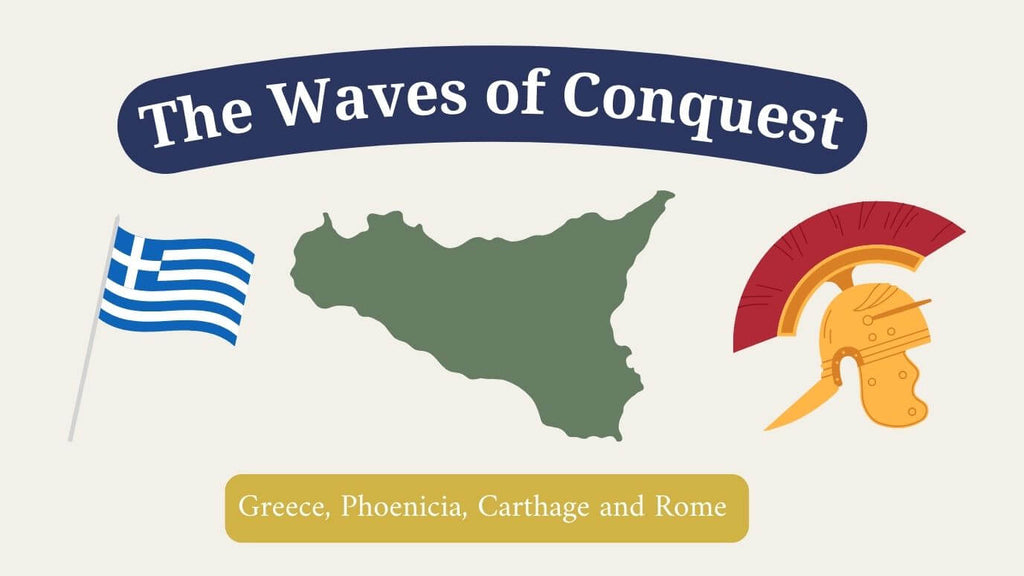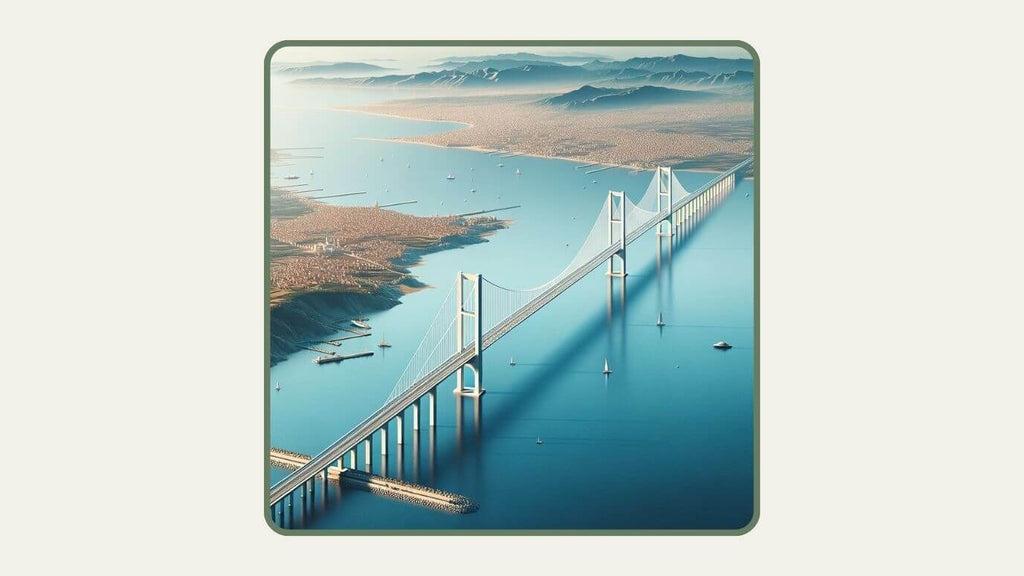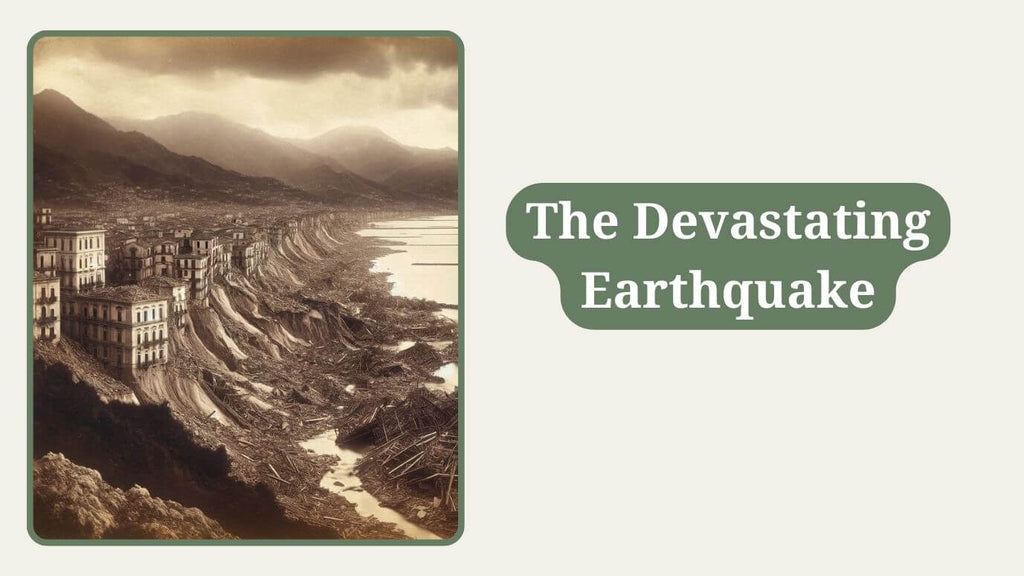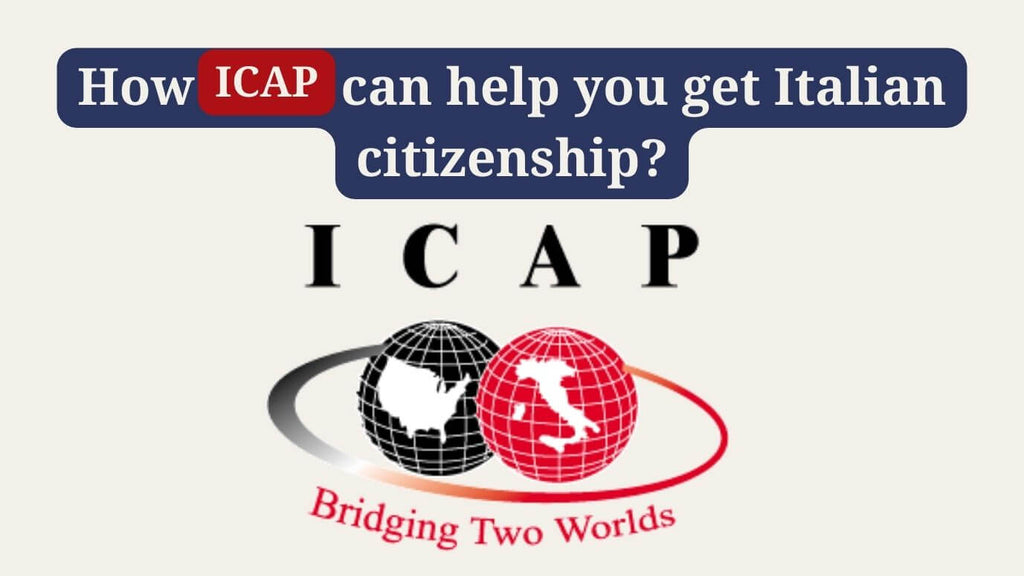Yes, Sicily is part of Italy, but it is separated from the Italian mainland by the Strait of Messina and is not currently connected by a bridge.
Sicily’s geographic separation has contributed to its distinct cultural identity within Italy, blending influences from various civilizations throughout history.
While undoubtedly Italian, Sicily offers a unique perspective on Italian Heritage as the largest Mediterranean island and a captivating tapestry of cultures.
Plans for the iconic Messina Bridge, a proposed suspension bridge spanning the Strait of Messina, aim to physically connect Sicily to the Italian mainland, while celebrating the island’s one-of-a-kind characters.
Sicily’s Strategic Location: A Coveted Mediterranean Gem

Here is a brief history of the Mediterranean Island that became part of Italy during the unification in 1861 and today is one of Italy's five autonomous regions.
For a relatively small island, Sicily boasts maybe an unparalleled history with stories of conquest and invasion.
While the following article is not meant to give you a detailed account of the island’s history, the aim is to give you a snapshot of the events that have formed the land and the people that are Sicilian today.
Since the beginning of time, Sicily has been fought over by all the powers of the Mediterranean.
Standing at the gateway between the east & the west, it has been conquered by different people groups wanting to gain Sicily’s geographical strategic advantage. Sicily stands strong today as the largest island of the Mediterranean with its unique identity & culture that has been forged as a result of the continual tidal wave of people.
As a visitor to the island you’ll see those legacies that have been left behind and are still embedded in the architecture, culture & language. Find out about the people that you’ll encounter and the wealth of history that the island has to offer.
In prehistoric times three different indigenous tribes dwelt on the island, one of which gave Sicily its name.
As time progressed and Greece sought to expand its power in the Mediterranean, settlers arrived in the eastern port of Naxos ready to make the island their home.
Like many civilizations that would later arrive, the Greeks built altars across the island as an act of worship to their gods, thus changing the landscape. It is thanks to the Greeks who brought with them vines and olives, that the island is so rich in these products today.
The Waves of Conquest: Greece, Phoenicia, Carthage, and Rome

As the Greeks arrived on the eastern side of Sicily in 735 BC, on the west coast Phoenicians arrived from modern day Lebanon & Syria to set up a trading base on the island. Not so concerned with establishing their identity on Sicily, the Phoenicians often took wives from the local population and integrated with the prevailing Greek culture.
It may have been the Phoenicians who first built the salt flats in Trapani, the beginnings of a salt harvesting tradition that still lives on today.
The Carthaginians were the next to arrive from modern day Tunisia, before an important battle was fought at Himera between the Carthaginians and the Greeks. The outcome of the battle confirmed Sicily as a Greek island and the Greek culture dominated the terrain.
From the Temple of Athena at Syracuse that was built to celebrate the victory in 480 BC, to the open air theaters that were built in every city. This was the golden age for Sicily who raised up important scientists during this time.
One of these was Archimedes; and Plato was a frequent visitor to the island, who surmised that Sicily would be a place to put into practice his model of Utopia.
Toward 200 BC the Greek rule was coming to an end and Rome was establishing itself as the new power in the Mediterranean.
During their 600 year rule of Sicily the landscape was to change again as the Romans used the fields to plant grain and build their rich, extravagant villas.
Although it seems that the Romans took more from the Sicilians than they gave, their greatest legacy was to be of a spiritual nature as Christianity spread throughout the island during their time in power.
After the fall of Rome at the end of the 5th Century, Sicily was conquered by the Barbarians and then captured by the Byzantines in the Middle Ages, who ruled from Constantinople or modern day Istanbul.
The Arab Influence: A Multicultural Melting Pot

At less than 100 miles from North Africa, it was only a matter of time before the Arabs arrived in Sicily and this was to happen in the 9th Century.
After arriving at Mazara del Vallo, it took the Arabs 50 years until they finally took control of the whole island and the changes they brought with them would be great. For the first time, Sicily became a multi ethnic island, with Christians, Jews & Muslims all residing together.
The Arabic influence was huge, moving the capital from Syracuse to Palermo, they lavishly decorated their new seat of power with gardens, parks, mosques and palaces.
Although the material remnants of their reign are scarce on the island today, their influence upon Sicilian cuisine has never been renounced. Citrus trees, date palms, pistachios, almonds, sugar, eggplant were all ingredients brought over from North Africa and have flavored the local dishes ever since.
Norman Rule: The Age of Kings and Architectural Wonders
The Normans were the next group of people to conquer Sicily. The term ‘Norman’ meant ‘men from the north’ & was applied to this new group of men descending from Scandinavian, Germanic, Roman & Celtic origins who made their home in Northern France and spoke a kind of French dialect.
The Normans were Christians and their society was highly evolved in its government, law, architecture and literature which would profoundly affect Sicily. In 1061 AD on a Christian mission sponsored by the Pope, the Normans invaded Sicily, led by 2 brothers from the De Hauteville family.
Sicily was to come under Norman rule and saw the introduction of a royal family as Roger II was crowned as the first king of Sicily.
During his reign King Roger championed the arts in Sicily, with one of his greatest feats being the Palatine Chapel, located in the Palazzo del Normanni in Palermo with its convergence of architectural influences, one of the wonders of Sicily and inscribed on Unesco’s world heritage list.
Other Norman sites to be visited include the ‘duomos’ or cathedrals at Monreale & Cefalu.
As Norman rule came to an end, it was the Spanish who took over for the next 500 years during which time the island became more isolated and the cultural movements sweeping across Europe during the 14th & 15th century never made it to Sicily.
The Spanish brought with them some products from the new world but also the Inquisition of 1478 with its aim to eliminate potential heretics from society by torturous means.
The seat of the inquisition in Sicily was at the Palazzo Steri (now Piazza Marina) in Palermo where inscriptions from the prisoners can still be seen.
In 1693 a huge earthquake devastated the island killing over 60,000 people and whole cities had to be rebuilt.
This was the time for Baroque architecture to flourish with lavish churches & palaces erected with colored marble, mosaic inlay and ornate decorations. The Sicilian Baroque style was unique in that it added cherubs and balconies to adorn the dramatic buildings.
There are some notable examples of this delightful style that can only be found in Sicily; be sure to visit Catania, Noto or Ragusa among other cities whose architectural style is now protected.
The last dynasty to rule Sicily as a sovereign kingdom were the Bourbons, a branch of the royal houses of France and Spain. The Bourbon Kings officially resided in Naples, and Naples and Sicily were officially merged to form the Kingdom of 2 Sicilies by Ferdinand I.
The Sicilians dreamed of autonomy and freedom from poverty and maladministration and being full of disillusionment, the Sicilians were ready for a revolution.
After a tumultuous history, liberation was coming for Sicily as part of a revolt led by Guiseppe Garibaldi in 1860 which would lead to a unified Italy.
In 1946 Sicily became an autonomous region of Italy, the position that it enjoys today. With such a colorful history, Sicilians will always be Sicilians, with an identity that comes from the land and is felt in the soul.
What is the Messina Bridge, and why will it be an engineering marvel?

The Messina Bridge is a proposed suspension bridge that aims to connect Sicily to the Italian mainland by spanning the Strait of Messina.
This vital infrastructure project, if completed, would be the longest suspension bridges in the world, providing a direct link between the island of Sicily and the Calabria region.
How long will the Strait of Messina Bridge be?
The bridge is planned to be approximately 3.7 km (2.3 miles) long, making it the longest suspension bridge in the world.
How much will the Strait of Messina Bridge cost?
Early estimates suggested the project could cost around €6.7 billion, but recent estimates paint a picture of increasing costs. According to a recent Treasure document, the cost could balloon to as much as €14.6 billion ($16.14 billion), nearly 50% higher than previous government estimates of around €6.7 billion.
Driving Economic Growth through Enhanced Connectivity
The primary purpose of the Messina Bridge is to streamline transportation, trade, and tourism between the island of Sicily and mainland Italy.
By establishing a direct physical link, this ambitious project aims to reduce the reliance on ferry services and significantly enhance the overall connectivity between the two regions.
This improved connectivity holds the potential to catalyze economic growth and development in several ways:
1. Boosting Trade and Commerce
The seamless movement of goods and services across the Strait of Messina will facilitate trade, allowing businesses in Sicily and mainland Italy to access broader markets more efficiently, fostering increased commercial activities and economic opportunities.
2. Stimulating Tourism
With the bridge in place, tourists will have easier access to Sicily's rich cultural heritage, stunning landscapes, and vibrant cities, potentially leading to a surge in tourism revenue for the island and contributing to the overall growth of the hospitality and related industries.
3. Facilitating Mobility
The bridge will enable faster and more convenient travel for commuters, businesspeople, and residents, enhancing productivity and fostering greater integration between Sicily and the Italian mainland in terms of employment opportunities and access to services.
4. Attracting Investments
The improved connectivity and accessibility provided by the Messina Bridge could make Sicily a more attractive destination for investments in various sectors, including manufacturing, logistics, and real estate, further fueling economic development.
Why Will the Messina Bridge Be an Engineering Marvel?
The construction of the Messina Bridge is considered an engineering marvel due to several significant challenges that must be overcome:
1. Seismic Activity
The Strait of Messina is located in a highly seismic region, prone to earthquakes. Designing a bridge that can withstand strong seismic forces and remain operational is a major engineering challenge.
2. Wind Conditions
The area is known for the Scirocco winds, which can reach high speeds and create significant lateral forces on the bridge structure. Innovative solutions are required to mitigate wind-induced vibrations and ensure the bridge's stability.
3. Deep Water Foundations
The Strait of Messina has a maximum depth of over 100 meters, necessitating the construction of deep-water foundations to support the massive bridge structure. This requires advanced engineering techniques and materials.
4. Logistics and Construction
Building such a long suspension bridge over water presents unique logistical challenges, including the transportation and assembly of massive components, as well as the coordination of numerous teams and specialized equipment.
If successful, the Messina Bridge will be a testament to human ingenuity and engineering prowess, overcoming geographical and environmental obstacles to create a landmark structure that will forever link Sicily to the Italian mainland.
How long is the ferry from Messina to Calabria?
The ferry ride from the Sicilian city of Messina to Calabria on the Italian mainland takes approximately 20-30 minutes for the shortest routes across the Strait of Messina.
For a relatively short trip across the strait, the ferry remains the most convenient option until the long-awaited bridge becomes a reality, connecting the island seamlessly with southern Italy.
What is the Messina Bridge plan?
The Messina Bridge plan, aimed at connecting Sicily to mainland Italy via a landmark suspension bridge across the Strait of Messina, has regained momentum after years of stalled progress. Recent developments indicate a renewed determination to bring this ambitious project to fruition.
Reviving a Long-Awaited Project
First proposed in the 1960s, the idea of a bridge spanning the narrow strait has tantalized planners and engineers for decades.
However, various challenges, including seismic risks, wind conditions, and funding hurdles, have repeatedly delayed its realization. In 2022, the Italian government breathed new life into the project, allocating €1.7 billion (approx. $1.8 billion) for preliminary work.
Ongoing Discussions and Feasibility Studies
As of early 2023, the Italian government is actively engaging with international engineering firms and conducting feasibility studies to assess the project's viability.
Discussions are underway to secure funding from various sources, including public-private partnerships and potential European Union support.
While the Messina Bridge plan faces significant hurdles, its revival underscores Italy's determination to overcome geographical barriers and create a landmark infrastructure project that could reshape the economic landscape of Sicily and its connections with the mainland.
When will the Strait of Messina Bridge be completed?
As of early 2023, there is no official timeline for when the proposed Strait of Messina Bridge connecting Sicily to mainland Italy will be completed. However, considering the massive scale of the project and the preliminary stages it is currently in, most estimates suggest it could take at least a decade or more to become a reality.
Feasibility studies and environmental assessments are still ongoing.
Securing full funding for the multi-billion-euro project is a major hurdle yet to be overcome.
Once approved and financed, the construction phase alone is expected to take 6-8 years minimum due to the bridge's unprecedented length and challenging conditions.
While the Italian government has revived plans for this long-awaited infrastructure project, its completion date remains uncertain.
Realistically, barring any significant delays, the earliest the Strait of Messina Bridge could potentially be open for use is likely in the early to mid-2030s.
What Role Does Seismic History Play in Connecting Sicily to the Italian Mainland?
Amidst the sun-soaked vistas and rich historical tapestry of Sicily lies a modern ambition that marries audacity with a centuries-old dream: the construction of the Messina Bridge.
Skeptics argue the folly of erecting such an engineering colossus in a zone notorious for its seismic activity, branding the venture as a flirtation with disaster. Yet, there's a romantic and enduring quest at the heart of this initiative, one that transcends mere physical connectivity.
It's about bridging the subtle divide between Sicily and Italy, making manifest the unspoken unity that has existed despite the tumults of time and nature.
This endeavor isn't just about overcoming geographical separations; it's a bold declaration of resilience, a testament to human ingenuity's ability to prevail over the forces of nature.
By leveraging advanced engineering techniques designed to withstand seismic events, this project is poised to counter the negative outlook with a beacon of hope and progress.
The Messina Bridge symbolizes not only a triumph of technology but also the enduring spirit of connection, underscoring the inseparable bond that ties Sicily to the heart of Italy.
Through this lens, the bridge becomes more than a structure; it embodies the aspiration to unite and the promise of a shared future, proving that dreams, no matter how ambitious, can stand firm against the tremors of doubt.
How did the 1908 Messina earthquake impact our family's history?

My grandparents were from Messina, Sicily, a beautiful place full of history and culture. They decided to move to the United States looking for new opportunities and a fresh start.
Life in America was different and challenging, but they made new friends and built a life they were proud of.
However, they always missed Sicily and felt a strong connection to their homeland. So, after some years, they made a big decision to move back to Messina, excited to be near their family and the familiar places they loved.
Unfortunately, not long after they returned, the devastating 1908 Messina earthquake happened. It was a massive disaster that destroyed much of the city and left many people without homes.
The earthquake made it really hard for my grandparents to stay in Sicily. Seeing the destruction and facing the challenges of rebuilding their lives from the ruins, they decided it was best to move back to the United States.
This event had a huge impact on our family's story, showing the strong ties we have to Sicily but also how important it is to find safety and stability.
What was the cost of the damage caused by the 1908 Messina earthquake?
In the early hours of December 28, 1908, the cities of Messina and Reggio Calabria were struck by a devastating earthquake, one of the deadliest in European history.
The destruction was immense, with entire cities reduced to rubble, claiming the lives of over 100,000 people.
While exact figures from the time are hard to come by, modern estimates suggest that if a similar catastrophe were to occur today, the cost of damages could run into the tens of billions of dollars.
This estimate considers the extensive rebuilding of homes, infrastructure, and public buildings that was necessary, alongside the economic impact and human displacement.
The 1908 earthquake not only changed the landscape of the region but also left a lasting imprint on the communities affected.
The reconstruction efforts that followed showcased human resilience and determination in the face of such overwhelming adversity.
Today, we remember the 1908 Messina earthquake not only for the tragic loss of life and destruction but also for the monumental rebuilding efforts that followed, highlighting the enduring spirit of the Sicilian and Calabrian people.
Rediscovering My Roots: A Journey Back to Messina

Just like my grandparents before me, the allure of Sicily called me back to its sun-kissed shores and historic landscapes.
My first journey to Messina at the tender age of 14 was more than a simple visit; it was a voyage into the heart of my heritage.
The vivid colors of the Sicilian countryside, the rich aromas of traditional dishes, and the warm embrace of distant relatives I met for the first time, all wove a spell that left an indelible mark on my soul.
Walking the streets of Messina, I could feel the echoes of my ancestors' footsteps beside me, guiding me through the city that had once been their home.
It was in these moments, amidst the beauty and legacy of Sicily, that I fell deeply in love with the land of my forebears.
This profound connection sparked a desire in me to bridge the gap between my American upbringing and my Sicilian roots.
It became clear that to honor the journey of my grandparents and the lineage of my family, I needed to do more than just visit; I needed to belong.
Driven by this passion, I embarked on the process of obtaining my Italian citizenship.
This decision was not just about gaining a passport; it was about reclaiming a piece of my identity that had been lost to time and distance.
Through documents, ancestry records, and the bureaucratic dance of dual citizenship, I wove my story back into the fabric of Italian life.
I share this journey in the hopes of inspiring other Italian Americans to rediscover their own connections to Italy.
Reclaiming your heritage is not merely a symbolic act; it is a homecoming, a celebration of the enduring bonds that link us to our ancestral lands.
Whether through obtaining citizenship, learning the language, or simply exploring the towns and villages of our forebears, reconnecting with our Italian roots offers a unique opportunity to enrich our lives and preserve our heritage for future generations.
In the embrace of Messina and the wider expanse of Sicily, I found a piece of myself that I hadn't realized was missing.
My hope is that others will be encouraged to undertake their own journey of discovery, finding in the process a deeper understanding of who they are and the rich tapestry of history and culture that defines the Italian American experience.
What are the benefits of obtaining Italian citizenship, and how can you get it?

If you have Italian roots, obtaining Italian citizenship can be a powerful way to embrace your heritage and gain a wealth of advantages.
As someone with Italian ancestry, you may be eligible for citizenship through descent, commonly known as "jure sanguinis."
This opens up a world of opportunities, from the ability to live, work, and travel freely within the European Union to strengthening your cultural ties with the land of your ancestors.
Exclusive Benefits for Italian Citizens
1. Freedom of Movement within the EU
Italian citizenship grants you the right to live, work, and study in any of the 27 European Union member countries without requiring a visa or work permit, allowing you to explore new opportunities across the continent.
2. Dual Citizenship Privileges
Often, those obtaining Italian citizenship can retain their current citizenship, enabling them to enjoy the advantages of dual nationality.
3. Retirement Options in Italy
As an Italian citizen, retiring in the country of your ancestors becomes a viable option, giving you the chance to immerse yourself in the rich culture and take advantage of Italy's high quality of life and affordable healthcare system.
Claiming Your Italian Heritage through Jure Sanguinis
If you have Italian ancestors, even as far back as a great-grandparent, you may be eligible for Italian citizenship by descent, known as "jure sanguinis." This powerful connection to your roots allows you to embrace your Italian heritage fully.
Navigating the Citizenship Process
While the process of obtaining Italian citizenship through descent can be complex, partnering with experienced Italian citizenship specialists, like , can make the journey smoother.
With their expertise in document gathering, legal assistance, and navigating bureaucracy, they can guide you through the steps of claiming your Italian heritage and unlocking the benefits that come with Italian citizenship.
By securing Italian citizenship, you not only gain practical advantages but also forge a deeper connection with your ancestral roots, honoring the legacy of your Italian forebears and paving the way for a future enriched by your cultural heritage.
Are Sicilian and Italian the same for citizenship purposes?
When it comes to obtaining Italian citizenship, having Sicilian ancestry is essentially equivalent to having ancestry from any other region of Italy.
This is because Sicily is an autonomous region that is an integral part of the Italian Republic.
Despite its unique cultural identity and history, Sicily is not a separate country from Italy. It is one of the 20 regions that make up the Italian nation-state. As such, Sicilian citizenship is considered the same as Italian citizenship from a legal standpoint.
A Shared Cultural Heritage
While Sicilians may have distinct cultural traditions, dialects, and culinary influences due to the island's unique history, they are still part of the larger Italian cultural fabric.
Obtaining Italian citizenship as a descendant of Sicilian ancestors is a way to embrace and celebrate this shared heritage.
Can Italian Americans become Italian citizens?
Yes, Italian Americans can become Italian citizens if they can trace their ancestry back to an Italian citizen, regardless of how many generations have passed.
The key requirement is having at least one Italian ancestor who was an Italian citizen at the time of your birth.
Italian citizenship can be obtained through a process called "jure sanguinis" or citizenship by descent. As long as proper documentation proving your Italian lineage is provided, Italian Americans are eligible to claim their Italian citizenship rights.
This applies even if your Italian ancestor was a great-grandparent or an ancestor even further back. The generational gap does not disqualify you from Italian citizenship as long as the bloodline connection to an Italian citizen can be established.
With Italian citizenship, Italian Americans gain the ability to live, work, and travel freely within Italy and the European Union, strengthening their ties to their ancestral homeland.
Partnering with experienced professionals can help navigate the citizenship process smoothly.
What is Italian 'Jure Sanguinis' citizenship?
Italian 'jure sanguinis' citizenship refers to the right to obtain Italian citizenship through descent or bloodline. This principle allows individuals with Italian ancestors to claim their Italian citizenship, even if they were born outside of Italy.
Under Italian law, citizenship is passed down from parents to children, regardless of where they are born.
This means that if you have at least one Italian citizen parent, grandparent, or ancestor further back in your lineage, you may be eligible for Italian citizenship by Jure Sanguinis.
The key requirements for Jure Sanguinis citizenship include:
Proving a direct bloodline to at least one Italian citizen ancestor
Providing official documentation, such as birth, marriage, and naturalization certificates, to establish the unbroken ancestral link
Jure sanguinis is a powerful way for those with Italian heritage to reconnect with their roots and gain the benefits of Italian citizenship, including the right to live, work, and travel freely within Italy and the European Union.
This path to citizenship is open to individuals with Italian ancestry, even if their connection dates back several generations.
By demonstrating a clear ancestral line to an Italian citizen, the doors to embracing your Italian heritage through Jure Sanguinis citizenship can be unlocked.
Can you retire in Italy as a dual citizen?
Yes, obtaining dual citizenship with Italy allows you to retire in the country, providing an excellent opportunity to spend your golden years immersed in the rich culture, history, and laid-back lifestyle that Italy offers.
As an Italian citizen, whether through ancestry (jure sanguinis) or naturalization, you have the right to live permanently in Italy without any restrictions.
Dual citizenship ensures you can maintain your existing citizenship while also enjoying the benefits and privileges of being an Italian citizen.
Retiring in Italy as a dual citizen opens doors to access the country's excellent healthcare system and potentially qualify for the Italian state pension, provided you have made contributions to the system during your working years.
Additionally, the lower cost of living in many parts of Italy, combined with the Mediterranean climate and renowned cuisine, makes retiring in the country an attractive proposition for those seeking a high quality of life during their retirement years.
With dual citizenship, you can freely move between Italy and your other country of citizenship, allowing you to split your time between both nations or fully immerse yourself in the Italian way of life as a retiree.
What does Italian citizenship get you as a retiree?
Obtaining Italian citizenship can be highly beneficial for those looking to retire in Italy. As an Italian citizen retiree, you'll enjoy several advantages:
Access to Italy's Public Healthcare System: You'll have access to Italy's high-quality public healthcare system, which provides comprehensive medical coverage at a fraction of the cost in many other countries.
Lower Cost of Living: Many parts of Italy offer a lower cost of living compared to other Western European countries, allowing your retirement savings to stretch further.
Ease of Residency and Travel: Italian citizenship eliminates the need for residence permits or visas, making it easier to establish yourself in Italy and travel freely throughout the European Union.
Tax Benefits: Depending on your specific situation, Italian citizens may be eligible for certain tax benefits, such as exemptions on foreign income or pensions.
Potential Eligibility for an Italian State Pension: If you've made contributions to Italy's pension system during your working years, you may qualify for an Italian state pension upon retirement.
Cultural Immersion: As an Italian citizen, you'll have the opportunity to fully embrace the Italian way of life, immersing yourself in the rich culture, cuisine, and traditions.
With Italian citizenship, retirees can enjoy a high quality of life, access to excellent healthcare, potential financial benefits, and the freedom to fully integrate into the vibrant Italian society.
Can you get Italian citizenship through a great-grandparent?
Yes, it is possible to obtain Italian citizenship through a great-grandparent under the principle of jure sanguinis (citizenship by descent or bloodline).
Italian citizenship law recognizes the right of individuals to claim citizenship based on their ancestral ties, even if those ties extend back multiple generations.
As long as you can prove an unbroken line of descent from an Italian citizen ancestor, the number of generations separating you does not disqualify you from eligibility.
This means that if your great-grandparent was an Italian citizen at the time of your grandparent's birth, you may be eligible for Italian citizenship.
The key is to have the necessary documentation, such as birth, marriage, and naturalization certificates, to establish the continuous chain of Italian citizenship passing down through your family line.
It's important to note that the process of obtaining Italian citizenship through a great-grandparent can be complex and may require professional assistance to ensure all requirements are met and the proper documentation is in order.
By successfully claiming Italian citizenship through a great-grandparent, you not only gain the ability to live, work, and travel freely within Italy and the European Union but also forge a deeper connection with your Italian heritage and ancestral roots.
Can you get Italian citizenship through a great-grandmother?
Yes, you can obtain Italian citizenship through a great-grandmother, but there are a few key things to consider.
Prior to 1948, Italian citizenship was primarily passed down through the male line. This means if your great-grandmother emigrated from Italy before 1948 and she was the firstborn child of an Italian citizen, her children (your grandparents) would not have automatically acquired Italian citizenship.
However, there is a light at the end of the tunnel!
In 1948, Italy reformed its citizenship law granting women the ability to pass citizenship to their children.
This change applies retroactively. So, if your grandmother was born after 1948 to an Italian woman who emigrated before 1948, you may still be eligible for Italian citizenship by descent.
Here's a breakdown to consider:
Great-grandmother emigrated before 1948: If your great-grandmother was the firstborn child of an Italian citizen and emigrated before 1948, there may be an extra hurdle.
Grandmother born after 1948: If your grandmother was born after 1948 to this same great-grandmother, then the 1948 law reform applies, and you should be eligible for citizenship by descent.
Important Note: It's always best to consult with an Italian citizenship expert to determine your specific eligibility. They can help you navigate the intricacies of the law and ensure you have the proper documentation to file your application successfully.
How do you get Italian dual citizenship by descent?
The time it takes to obtain Italian citizenship can vary considerably depending on the specific path you pursue and the complexity of your case. However, in general, the process can take anywhere from several months to a couple of years or more.
For Italian citizenship by descent (jure sanguinis):
If you have a clear and well-documented ancestral line to an Italian citizen, the process could take 6-12 months on average.
More complex cases, such as those involving missing documentation or extended ancestral lines, may take 1-2 years or longer.
For citizenship through marriage to an Italian citizen:
The typical processing time is around 2 years of marriage if residing in Italy.
If residing outside Italy, the process may take 3 years or more.
For naturalization (based on residency in Italy):
After meeting the 10-year legal residency requirement, the naturalization process itself can take 1-2 years.
It's important to note that processing times can be influenced by factors such as backlogs, the specific consulate or municipality handling your case, and the completeness of your application and supporting documents.
To ensure a smooth and efficient process, it is advisable to work with experienced professionals who specialize in Italian citizenship applications. They can provide guidance, help gather necessary documentation, and navigate the bureaucratic procedures, potentially reducing the overall timeline.
While obtaining Italian citizenship can be a lengthy process, the rewards of reconnecting with your heritage and gaining the rights and privileges of an Italian citizen often make the effort worthwhile.
How long does it take to get Italian citizenship?
The time it takes to obtain Italian citizenship can vary considerably depending on the specific path you pursue and the complexity of your case. However, in general, the process can take anywhere from several months to a couple of years or more.
For Italian citizenship by descent (jure sanguinis):
If you have a clear and well-documented ancestral line to an Italian citizen, the process could take 6-12 months on average.
More complex cases, such as those involving missing documentation or extended ancestral lines, may take 1-2 years or longer.
For citizenship through marriage to an Italian citizen:
The typical processing time is around 2 years of marriage if residing in Italy.
If residing outside Italy, the process may take 3 years or more.
For naturalization (based on residency in Italy):
After meeting the 10-year legal residency requirement, the naturalization process itself can take 1-2 years.
It's important to note that processing times can be influenced by factors such as backlogs, the specific consulate or municipality handling your case, and the completeness of your application and supporting documents.
To ensure a smooth and efficient process, it is advisable to work with experienced professionals who specialize in Italian citizenship applications. They can provide guidance, help gather necessary documentation, and navigate the bureaucratic procedures, potentially reducing the overall timeline.
While obtaining Italian citizenship can be a lengthy process, the rewards of reconnecting with your heritage and gaining the rights and privileges of an Italian citizen often make the effort worthwhile.
How can ICAP Help You Get Your Italian Citizenship?
ICAP, the Italian Citizenship Assistance Program, understands the intricacies of obtaining Italian citizenship by descent.
Their team of specialists can guide you through every step of the process, from researching your ancestry and gathering the required documents to preparing your application and navigating any potential roadblocks.
They offer personalized consultations, assistance with document translation and apostille procurement, and even help you prepare for your consulate interview.
With ICAP by your side, you can feel confident in your journey towards becoming a dual citizen of Italy.
Why ICAP?
Don't let the complexities of obtaining Italian citizenship by descent discourage you. ICAP, the Italian Citizenship Assistance Program, is here to guide you through every step of the journey.
With their extensive knowledge and experience, ICAP's team of specialists will become your trusted partners in navigating the often-challenging Italian bureaucracy.
From researching your ancestry and gathering necessary documents to preparing your application and overcoming potential roadblocks, ICAP will be with you every step of the way.
Whether you need assistance with document translation, apostille procurement, or interview preparation, their expertise ensures a smooth and successful path towards becoming a dual citizen of Italy.
ICAP's client-focused approach and proven success stories are testament to their commitment to helping you achieve your dream of Italian citizenship.
They'll leave no stone unturned, providing comprehensive support and ensuring you feel confident throughout the entire process.
Take the first step today and get started with ICAP. Their team of specialists will work tirelessly to unlock the doors to your Italian heritage, making the journey to dual citizenship a rewarding and memorable experience.
Don't let this opportunity pass you by. Contact ICAP now and embark on the path to embracing your Italian roots and all the benefits that come with Italian citizenship.
Start Your Journey with a Free Consultation!
- Unsure of Your Eligibility? Schedule your Free Eligibility Call Now!
- Find Out If You Qualify & Get Process Details and begin your journey to Italian Citizenship!
- Phone: (312) 549-9670


